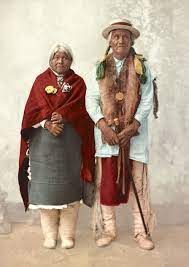Pueblo Family
Pueblo Indians, Pueblo Family – (towns, villages , so called on account of the peculiar style of compact permanent settlements of these people, as distinguished from temporary camps or scattered rancherias of less sub stantial houses). A term applied by the Spaniards and adopted by English-speaking people to designate all the Indians who lived or are living in permanent stone or adobe houses built into compact villages in south Colorado and central Utah, and in New Mexico, Arizona, and the adjacent Mexican territory, and extended sometimes to include the settlements of such tribes as the Pima and the Papago, who … Read more

